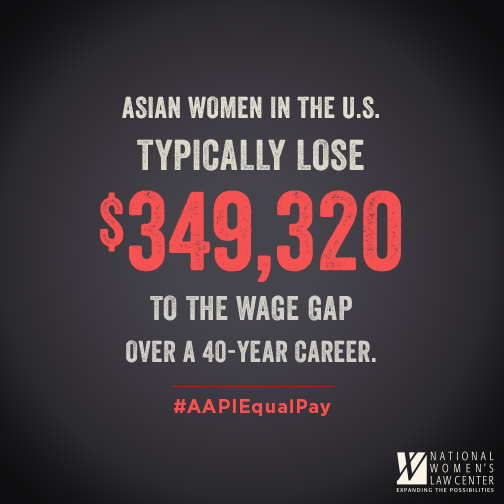Abortion rights, women of color, and LGBTQI+ people are under attack. Pledge to join us in fighting for gender justice.
How Low-Wage Retail Jobs Hurt Women’s Bottom Line

 This morning the Bureau of Labor Statistics (BLS) released the most recent employment numbers for March. While the economy added 98,000 jobs last month, retail trade employment fell by nearly 30,000, mostly in general merchandise stores, sporting good, hobby, book and music stores, and appliance stores. Since there is a one month gap between when jobs data are released and the time period they represent, these data may reflect post-holiday shifts in retail work. But a recent string of bankruptcy filings by several major retail stores have us asking: given that women make up a majority of the lowest paying jobs in the retail sector, how does their overrepresentation in these jobs impact women’s bottom line and more importantly their overall economic security? It turns out, quite a bit.
This morning the Bureau of Labor Statistics (BLS) released the most recent employment numbers for March. While the economy added 98,000 jobs last month, retail trade employment fell by nearly 30,000, mostly in general merchandise stores, sporting good, hobby, book and music stores, and appliance stores. Since there is a one month gap between when jobs data are released and the time period they represent, these data may reflect post-holiday shifts in retail work. But a recent string of bankruptcy filings by several major retail stores have us asking: given that women make up a majority of the lowest paying jobs in the retail sector, how does their overrepresentation in these jobs impact women’s bottom line and more importantly their overall economic security? It turns out, quite a bit.
Specific retail occupations where women make up a large share tend to have lower wages.
Women make up nearly 3 in 4 cashiers (73 percent) and nearly 2 in 3 customer service representatives (65 percent). At $9.69 an hour, cashiers have the lowest median wage of any specific retail occupation. Customer service representatives fare slightly better at $12.13 an hour. However, these wages have remained relatively stagnant over the past several years. Black and Latinx workers are also overrepresented in these occupations, with Black workers making up 18 percent of cashiers and 17 percent of customer service representatives, and Latinx workers making up 21 percent of cashiers and 18 percent of customer service representatives. There is also a management gap—even though women make up 50 percent of workers in retail, they only make up 44 percent of retail supervisor positions, which also happen to pay much higher wages.
Women in low-wage retail jobs are often forced to accept unpredictable schedules and are less likely to have access to paid sick time or health insurance through their employer.
This is a lot to unpack, but gets at the ways being in a low-wage job can compound the pressures on women’s economic security. Unpredictable work schedules make it nearly impossible for working women to maintain stable childcare arrangements or pursue an education to advance their careers and their paycheck. Not only does the poor quality of these jobs hold women back, the lack of paid sick time and affordable health insurance coverage benefits in many of these positions means that a single illness may completely destabilize a woman and her family’s economic security. At $9.69 an hour, assuming your boss doesn’t fire you for taking 2-3 days off because you or your child has the flu, you lose about $230 which is almost a week and a half’s worth of groceries for a family of four.
Heard of the wage gap? It applies here too.
Adding insult to injury, the wage gap makes it even harder for women in the low-wage workforce to get by, let alone get ahead. Women who are cashiers make 89 cents and women who are customer service representatives make 77 cents for every dollar paid to a man in the same positions, putting in the same hours, all year long. The wage gap is even worse for women who are lucky enough to land a higher paying supervisor or management position in this sector. Women who work as retail supervisors are paid 71 cents for every dollar paid to a man in the same position.
Overrepresentation in the low-wage workforce continues to threaten women’s economic security, especially for women of color. We have the opportunity to expand women’s access to better pay, high quality jobs by increasing the minimum wage, closing the wage gap, protecting the Affordable Care Act, and making progress on paid sick leave. We should take it.





